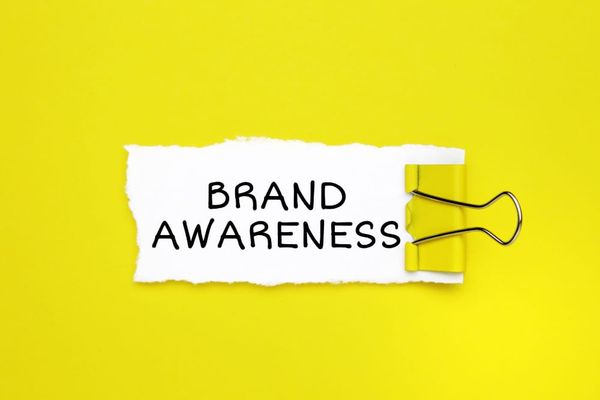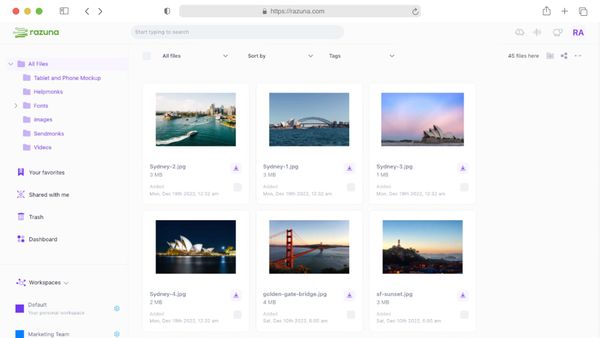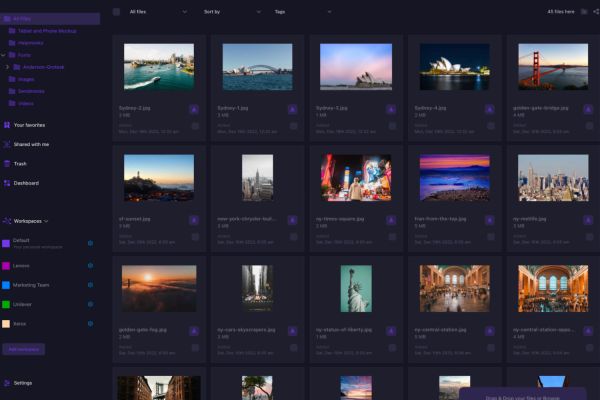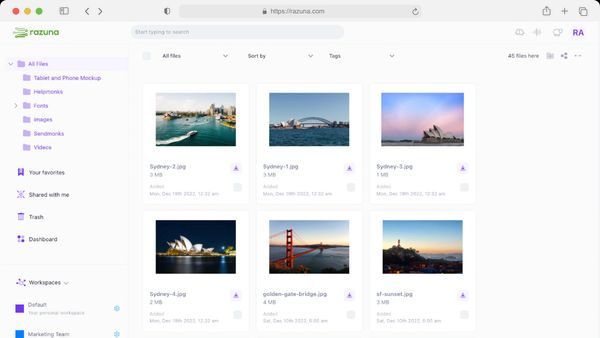
It takes 0.05 seconds for people to form an opinion about your brand as soon as they land on your website. Additionally, 46% of consumers state they’d pay more for brands they trust. What do these statistics have to do with growing your business?
Everything. At least when it comes to understanding brand equity's importance. Your brand equity is the secret sauce that keeps customers coming back. It’s what has your customers telling their friends about your business and ultimately boosting your bottom line.
However, building brand equity is something you have to constantly cultivate, nurture, and leverage if you want sustained success and growth.
But how do you create a successful brand equity strategy? What steps should businesses take toward increasing their brand equity? If these questions keep you up at night, we have an answer for you in this comprehensive guide.
Keep reading if your business is looking for new strategies to boost its brand equity.
What Is Brand Equity?
Brand equity measures the value of a product or company based on consumers' perceptions and experiences. It boils down to customers who recognize a brand and associate positive values, benefits, and emotions with it are more likely to choose them over competitors.
What makes brand equity so powerful is that loyal customers may even pay a premium for products associated with their favorite brand.
Furthermore, the study linked above showed that businesses offering consistent branding could benefit from a 33% increase in revenue.
Therefore, striving to create a strong emotional connection with consumers to maximize your market share and establish a competitive advantage is essential. That’s what building brand equity is all about.
Brand Equity vs. Product Equity: What’s the Difference?
Did you find yourself reading the description above and thinking, “Wait, isn’t that product equity?” If so, you’re not alone. Many people get the two terms confused.
And sure, brand and product equity are important concepts for businesses to understand. But what’s the difference between the two?
Brand equity is the value of a product or service based on its name and reputation, while product equity is all about the quality, design, and function of said product or service.
Brand equity considers customer loyalty, brand awareness, and effective branding efforts. On the other hand, product equity answers questions such as how good it is at doing its job or what features it offers that set it apart from competitors in a given market.
While every successful business needs both brand and product equity to achieve success, it’s best to focus on one thing at a time unless you have a large team to rely on.
Ultimately, understanding how these two elements interact with each other can help guide any business down a path to profitability.

The Importance of Brand Equity
You know what brand equity is, but do you understand the importance of brand equity? Brand equity is an important asset for businesses, as it reflects customers' value in their relationship with a company.
As customer loyalty and trust grow, brand equity increases. This means more customers are willing to spend more money on the company's products and services. This allows your business to stand out from its competitors.
Ultimately, brand equity is important because it builds customer loyalty and allows most companies to sell at premium prices. It also creates long-term growth opportunities and is helpful when creating strong marketing campaigns that truly engage consumers.
The overall impact of strong brand equity with your customers is that they are far more likely to:
- Think positively about your brand
- Become (long-term) loyal customers
- Be easier to reach with new promotional tactics and products
- Convert whenever you send them new offers
The bottom line is that investing in enhancing your brand equity pays off in the long run, making it essential for any successful, growing business.
Benefits of Building Brand Equity
Building brand equity offers organizations many tangible and intangible benefits. From the success of a product launch to the advantage of gaining customer trust, staying ahead of competitors is easier with strong brand equity.
Still not sold on the idea of brand equity importance? Here are a few massive benefits you can expect to enjoy as a business when you invest in building brand equity.
Increase Business Profits
Building brand equity is an effective way of increasing business profits. How does that work?
Investing effort into strengthening your brand through marketing, customer service, and other strategic initiatives can create trust in consumers, allowing them to purchase more frequently or pay more for the same products.
Additionally, with increased brand loyalty comes reputation. This further establishes your company in the public domain and encourages customers to try out new offerings that may even come with a higher price tag. If they love your brand, they’ll pay the price without hesitation.
To reap this benefit, you need to know how to harness the power of consumer insights. Pay attention to purchasing data and customer behavior. Use that to see how your target market values your business offerings.
Once you understand how much they value your offerings, you can set reasonable prices and increase sales while diminishing (or maintaining) your current costs.
To summarize, building brand equity helps increase business profits due to referrals from existing customers. It also provides you with the ability to create a better pricing strategy and increase consumer confidence in your company's offerings.
Improve Customer Trust
When customers encounter a recognizable brand, they're more likely to trust it and make a purchase. As customer trust increases, so do a company's sales. This means that, sooner or later, your loyal customer base will increase, and profit margins should follow suit.
Additionally, as mentioned in the study above, people will return to a brand they like because they know what to expect regarding quality, consistency, customer service, and price point. Over time, this reduces the costs associated with customer attraction and retention.
And finally, higher customer engagement rates come with more trust. When people trust your brand, they’re more likely to be emotionally invested in its success.
Become an Influential Company
Want to become an influential company in your industry? If so, invest in brand equity. If not, then why not? An influential company will have a larger reach among customers, create more trust and recognition, and serve as an advocate for its values.
This also comes with (typically) an increased market share. When you can attract a larger audience and convert them into loyal, engaged customers, your company can establish itself as a leader in its respective industry.
Still aren’t convinced it’s that important? Think again!
As a leader in your industry, you’re able to create more creative campaigns or even begin to target different segments of your current audience or market. Thus, building brand equity over time can have amazing payoffs to becoming a top-tier business in any industry.
Attract Top Talent
Building brand equity is important in boosting sales and engagement and improving customer loyalty. But did you know it can also help attract top talent?
When potential employees are looking for a job, they’re likely interested in working for a well-known company with strong values and brand names.
Job seekers actively seek out companies who have set values and build relationships with customers through those values. Thus, having excellent brand equity when targeting job prospects could make it easier to scoop up the best employees in your industry.
Easily Enter New Markets
One reward associated with building brand equity is the relative ease with which businesses can enter new markets. After all, having a well-established and recognizable brand enables businesses to quickly access new marketplaces.
The best part? If you’ve built enough brand equity, you can do this without having to invest significant amounts of money or time in establishing your presence.
Think about Apple. Apple’s brand equity is so powerful that they don’t have to explain who they are or what they offer when they want to build a new store in some location around the world.
The point is that, with brand equity, your business can use its existing recognition and leverage it when targeting new audiences. This usually results in accelerated growth.
Improve Your Market Share
Finally, brand equity can help your business increase its market share, the portion of total sales held by a particular company in an industry.
How? Remember, building brand equity can help you differentiate yourself from other competitors. When done right, customers will be more likely to make purchases from your brand if they recognize and feel positive about it.
Ultimately, investing in building brand equity can significantly lower marketing costs and produce higher returns by increasing recognition of your brand, improving the loyalty of existing customers, and attracting new ones.

How to Build Brand Equity
The importance of brand equity might be clear by now. But how do you go about building it?
To build your brand equity, it’s important to focus on creating a consistent message and an engaging customer experience. Developing a great product or service that meets customer needs is the foundation of building brand equity.
Market research can also help determine how to best engage with current and potential customers through advertising, promotions, and other tactics to drive recognition and loyalty. But we’re getting ahead of ourselves here.
If you’re new to brand management or building brand equity, here are five steps to follow.
Understand Your Target Audience
First, investing time in researching your target audience is essential. Answer the following questions.
- Who should you be targeting?
- What are their preferences and interests?
- What unmet needs do they have?
- How and where is the best place to reach them (online or in person)?
Understand what makes your target market happy. Then, make sure to weave those values into everything you communicate.
Introduce Your Brand
Once you know who you’re targeting, you’ll need to introduce your brand to that audience. A quality brand introduction should offer a clear and concise overview of...
- What the product or service is
- How it works
- Why customers should purchase it
Through strong messaging and visually appealing graphics, consumers can quickly absorb information about the product or service and its values.
A great introduction helps set customers’ expectations for using the product or service, ensuring they know what to expect from their investment.
Leverage Customer Data
Now that you’ve introduced yourself, you’ll want to pay attention to your marketing campaigns. Measure the right metrics and note how those metrics change over time.
By collecting customer data, your brand can gain important insights about their preferences and behaviors that you can then use to identify potential opportunities and leverage strategic advantages.
This information provides valuable insight into customer needs and wants, enabling businesses to...
- Better target their message
- Refine products and services
- Increase personalization options
- Improve customer service
- Create a stronger connection between your brand and its customers
The bottom line? By leveraging customer data, you can build lasting relationships with customers that translate into increased loyalty and more profits.
Focus on Meaningful Messaging
Unfortunately, offering quality products and services is no longer enough. Customers are increasingly looking at what a business has to say and what values they uphold. A whopping 82% of people want a brand’s values to align with their own.
How can you promote your brand’s values? Through meaningful messaging. Here, it’s important to focus on making a connection with the audience. Think about who your target market is and create content that speaks to them in a personalized way.
Being clear and concise in your message is also essential. Try to boil down your ideas into easy-to-understand statements.
Finally, strive to create messages that are memorable and create an emotional response. This could mean using compelling language or including visuals like videos and images. However, whenever you craft your marketing messages, strive to be authentic and genuine.
Create Great Digital Experiences
How can you use all of the above-mentioned tips to build brand equity effectively? Focus on offering your customers a stellar digital experience. After all, researchers have found that people care about the digital experience when it comes to deciding what to buy and who to buy from.
For example, social media influences 71% of consumer buying decisions these days. And according to one Forbes study, 73% of consumers believe a good experience is key in influencing their brand loyalties.
The bottom line? To build brand equity, you must ensure your brand’s online presence provides the best customer journey. One way to do this is by leveraging AI-powered digital experience intelligence.
AI allows for a more accurate understanding of customer behavior. This makes it easier to target audiences with the right product and message. It can also help you craft personalized content that resonates better with customers.
Furthermore, AI can help you improve your brand's digital presence by...
- Identifying ways in which you can increase interaction rates
- Suggesting ways to edit existing strategies
- Providing targeted services based on customer needs
This end-to-end view allows your brand to identify which elements of the digital customer journey aren’t working. Once you know what’s not working, optimizing the customer experience with minimal effort is easier.

How to Measure Brand Equity
When it comes to investing in brand equity, the effort is never-ending. After all, it’s not as simple as crafting meaningful relationships with customers and then leaving it at that.
To truly understand what kind of an impact your efforts are having, you also need to know how to measure brand equity.
Brand Awareness
Brand awareness is how familiar people are with a particular brand. Unsurprisingly, the more familiar people are with a brand, its perceived value is higher.
There are a variety of ways to measure how consumers view and interact with a brand, including:
- Surveys
- Focus groups
- Website analytics
- Customer interviews
Surveys are the most common and effective way to obtain feedback about how people perceive a brand. However, focus groups help capture how consumers think and feel about a brand. Additionally, it's important to use website analytics to monitor how often people use your business’s site and how much time they spend on it.
Brand Loyalty
Brand loyalty refers to how dedicated customers are to the products and services offered by that brand. Keep in mind that brand loyalty isn't static, though. Rather, you can quantify it by tracking customer behaviors over time, such as:
- Repeat purchases
- The frequency at which customers choose one company’s product or service over another
- Reviews from customer surveys
If your business measures these indicators regularly and accurately, it can better assess its brand's equity and make any necessary changes for improvement to retain loyal customers.
Consumer Behavior
Finally, monitoring consumer behavior is important to maintaining and improving brand equity. Keeping track of how customers interact with the brand, including their purchase decisions, preferences, and feedback, can provide insights into what they value and how to improve.
By understanding what motivates customers to connect with your brand, your marketing team can provide them with better experiences that lead to higher levels of engagement and loyalty.
The best way to monitor consumer behavior, though, is through strategically leveraging customer data and market research tools. When you do this, you can monitor consumer behavior more effectively and use these insights to make informed decisions that improve your overall brand presence.
So, Why Is Brand Equity Important?
In today's digital world, brand equity has become more important than ever. Brand equity is the value that a brand carries with customers and potential customers. You can generally achieve this through...
- Highly-targeted and compelling messaging
- Good customer service
- Staying true to brand values
- Creating an emotional connection between your brand and its users
With so many digital platforms available for companies to communicate their brand story, strong brand equity helps ensure that customers choose a particular brand over its competitors.
As such, it’s important to invest time in cultivating your brand's presence online if you want to ensure success in the long run. Ultimately, brand equity lays the foundation for any business’s longevity in today's digital marketplaces.
Future-Proof Your Digital Asset Management
By now, you (hopefully) understand the importance of brand equity. However, did you know that digital asset management is one of the key factors determining brand equity?
When you manage brand assets like photography, logos, and other visuals precisely and accurately, brand recognition increases among consumers. With a cohesive brand identity, audiences become more familiar with the brand and its values.
This means that if you’re looking to increase your brand equity, you should look into digital asset management tools to ensure that your brand assets are organized and easily accessible for marketing campaigns.
Luckily for you, we can help with that.
We make brand asset management simple by providing powerful digital asset management tools that are easy to use and straightforward. All you have to do is upload, tag, and collaborate on your brand asset workflow, and you won't want to go back to anything else.
Click here to get started for free with Razuna today!






